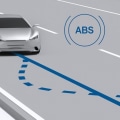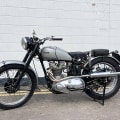When it comes to upgrading the performance of a Triumph TR, interior trim is often overlooked. While it might not have the same impact as a powertrain upgrade or suspension modifications, interior trim upgrades can still make a huge difference in the look and feel of your vehicle. In this comprehensive overview, we'll take a look at the different types of interior trim upgrades available, the cost involved, and why they are worth considering. Whether you're looking for a subtle touch of luxury or full-on customization, interior trim upgrades can help you achieve the desired look and feel for your car.
From leather seating to custom dashboards, the possibilities are endless. We'll discuss all of this and more as we dive into this comprehensive overview of interior trim upgrades. So let's get started!Interior trim upgrades are a great way to give your car a new look and improved performance. There are many different types of interior trim upgrades available, including dashboard trims, door panels, window trims, and more.
Each type of trim upgrade offers its own benefits, such as improved sound insulation, increased durability, and enhanced style. In this article, we'll explore the different types of interior trim upgrades available and how they can improve your car's performance. One of the most popular types of interior trim upgrades are dashboard trims. Dashboard trims can help reduce noise from the engine and other components, while also adding a touch of style to your car's interior. Dashboard trims come in a variety of materials, including vinyl, leather, wood, and aluminum.
Vinyl is a popular choice because it is lightweight and easy to install, while leather adds a more luxurious look. Wood trims can provide an elegant touch to your car's interior, while aluminum trims are strong and durable. Door panels are another type of interior trim upgrade that can help improve the look and performance of your car. Door panels can be made from a variety of materials, such as vinyl, leather, wood, or aluminum. Vinyl is a popular choice for door panels because it is lightweight and easy to install, while leather adds a more luxurious look.
Wood panels can provide an elegant touch to your car's interior, while aluminum panels are strong and durable. Window trims are another popular type of interior trim upgrade that can improve the look and performance of your car. Window trims are typically made from vinyl or aluminum and come in a variety of colors and styles. Vinyl window trims are lightweight and easy to install, while aluminum window trims are strong and durable. Window trims can also help reduce noise from the engine and other components. When choosing interior trim upgrades for your car, it's important to consider the installation process.
Installing interior trim upgrades can be a complex process that requires specialized tools and knowledge. It's important to make sure that you understand the process before attempting to install any interior trim upgrades yourself. If you're not confident in your ability to install the trim correctly, it's best to leave it to a professional. The cost of interior trim upgrades will vary depending on the type and quality of materials used. Vinyl is usually the most affordable option, while leather and wood trims may cost more.
Aluminum is usually the most expensive material used for interior trim upgrades. It's important to research different materials and prices before making your decision. Interior trim upgrades can also improve the performance of your car. Improved sound insulation from dashboard and door panel trims can help reduce engine noise, while lightweight materials like vinyl can help improve fuel economy. In addition, installing new trim pieces can help increase horsepower by reducing air resistance. When shopping for interior trim upgrades, it's important to get the best value for your money.
Research different materials and prices before making your purchase so that you get the most out of your investment. If you're not sure which type of trim upgrade is right for you, consult with a professional for advice on what will work best for your car.
Benefits of Interior Trim Upgrades
Interior trim upgrades can bring a variety of benefits to your car, such as improved sound insulation, increased durability, improved fuel economy, and increased horsepower. Sound insulation helps to reduce the amount of noise that enters the cabin from outside sources, such as road noise, engine noise, and wind noise. This can make for a more comfortable and enjoyable ride.Additionally, upgraded interior trim pieces are often made from higher-quality materials that are more durable than the stock parts, meaning they are less likely to break down over time. Upgrading your car's interior trim can also lead to improved fuel economy. Adding lightweight components can help reduce the overall weight of the vehicle, which can improve engine efficiency and help you get more miles per gallon. Finally, some interior trim upgrades may be designed to increase horsepower and torque.
This can be especially beneficial if you're looking to add more power to your car.
Costs Involved with Interior Trim Upgrades
When it comes to interior trim upgrades, costs can vary widely depending on the type of upgrade and the materials used. In general, replacing upholstery and installing trim pieces are relatively inexpensive, but more complex changes like installing a new dashboard or replacing door panels can be more expensive. It's important to consider the cost of these upgrades in relation to the value they add to your car. If you're looking for the best value for your money, there are a few tips you should keep in mind. Firstly, research the different types of materials available and find out which ones are most durable and cost-effective.For example, leather upholstery might be more expensive than vinyl but it may also be more durable and last longer. Additionally, you should look into buying from reputable brands as they often have better quality materials that will last longer and look better. Secondly, consider the cost of installation. Many interior trim upgrades require professional installation, so make sure to factor this into the total cost of the upgrade. Additionally, if you're looking to save some money, you may want to consider DIY installation if you're confident in your abilities.
However, for more complex upgrades it is often best to leave it to the professionals. Finally, shop around for deals and promotions. Many car parts retailers offer discounts and promotions on interior trim upgrades, so it's worth doing some research to find out what's available. Additionally, purchasing parts online can often save you money compared to buying them in stores.
Improved Performance from Interior Trim Upgrades
Interior trim upgrades can have a significant impact on your car's performance. From improved fuel economy to increased horsepower, these upgrades can help you get the most out of your car.Here are some of the ways interior trim upgrades can improve performance:Fuel Economy: Upgrading the interior trim of your car can lead to improved fuel economy. By replacing old, worn-out parts with newer, more efficient components, you can reduce the amount of fuel your car needs to run. This can save you money on fuel costs in the long run.
Power:
Installing new trim pieces or upholstery can also increase the power of your car's engine.This is because the new parts are often lighter and less restrictive, allowing for a more efficient air flow and improved combustion. As a result, your engine will be able to generate more power and torque.
Handling:
Upgrading your car's interior trim can also improve its handling. By replacing old, worn-out parts with lighter, more aerodynamic components, you can reduce drag and friction, resulting in a smoother ride and better handling.Appearance: Of course, interior trim upgrades aren't just about improving performance; they can also help improve the look of your car. By changing out old, worn-out parts with newer, more stylish pieces, you can give your car a fresh new look that will turn heads everywhere you go.
Installation Tips for Interior Trim Upgrades
Installing interior trim upgrades is a great way to improve the look and performance of your car. However, it's important to take the time to properly install the trim pieces in order to ensure they look their best and function properly.Here are some tips to help make the installation process easier and more successful.
1.Read the Instructions Carefully:
Before attempting to install any trim pieces, it's important to read through the instructions carefully. This will help ensure that you understand the specific steps needed to properly install the trim pieces.2.Use the Right Tools:
It's essential to use the right tools for the job. Different types of trim require different tools. Be sure to research what tools are needed and have them on hand before starting the installation process.3.Take Your Time:
Rushing through the installation process can lead to mistakes, so it's important to take your time and make sure everything is done correctly.If you don't feel confident in your ability to install the trim, it may be best to have a professional do it for you.
4.Inspect Your Work:
Once you've finished installing the trim, it's important to inspect it carefully. This will help ensure that everything is properly installed and functioning correctly.5.Clean Up:
Finally, be sure to clean up after yourself when you're done. This includes disposing of any packaging materials or tools used during the installation process.Types of Materials Used for Interior Trim Upgrades
When it comes to interior trim upgrades, there are several different types of materials to choose from. The most common materials used for interior trim upgrades include vinyl, leather, wood, and aluminum.Each of these materials has its own unique benefits and drawbacks, so it's important to consider all your options before making a decision.
Vinyl
Vinyl is a popular choice for interior trim upgrades due to its low cost and versatility. It can be easily cut and shaped into various forms, making it a great choice for customizing your car's interior. Vinyl is also water-resistant and easy to clean, making it a great choice for those looking for a low-maintenance trim option. However, it is not as durable as other materials and can wear down over time.Leather
Leather is another popular material used for interior trim upgrades.It is much more durable than vinyl and has a luxurious look and feel. Leather is also water-resistant and can last for many years with proper care. The downside to leather is that it can be expensive and difficult to maintain.
Wood
Wood is another popular material used for interior trim upgrades. It provides a classic look and feel that can add an air of sophistication to any car's interior.Wood is also relatively easy to maintain, although it does require regular cleaning and conditioning. The downside to wood is that it can be expensive and prone to damage.
Aluminum
Aluminum is a great choice for those looking for a more modern look and feel. It is lightweight yet durable, and can be easily shaped into various forms. Aluminum is also resistant to corrosion, making it ideal for cars exposed to harsh weather conditions.The downside to aluminum is that it can be more expensive than other materials. Upgrading your car's interior with trim pieces is an effective way to improve the look and performance of your vehicle. Benefits include improved aesthetics, better insulation, and improved sound quality. Different types of materials can be used for the trim upgrades, such as plastic, wood, and metal. Be sure to follow installation tips to ensure a safe and secure fit.
Costs will vary depending on the type of material you choose and the complexity of the job. In the end, you'll be rewarded with an improved interior and an enhanced driving experience. If you're interested in learning more or purchasing the necessary parts, reach out to a qualified installer who can provide expert advice and assistance. With interior trim upgrades, you can transform your car's interior and take your driving experience to the next level.


